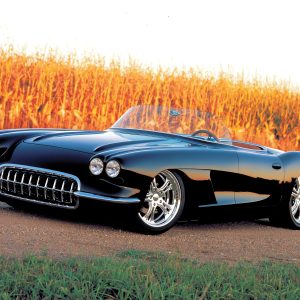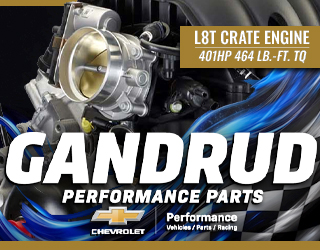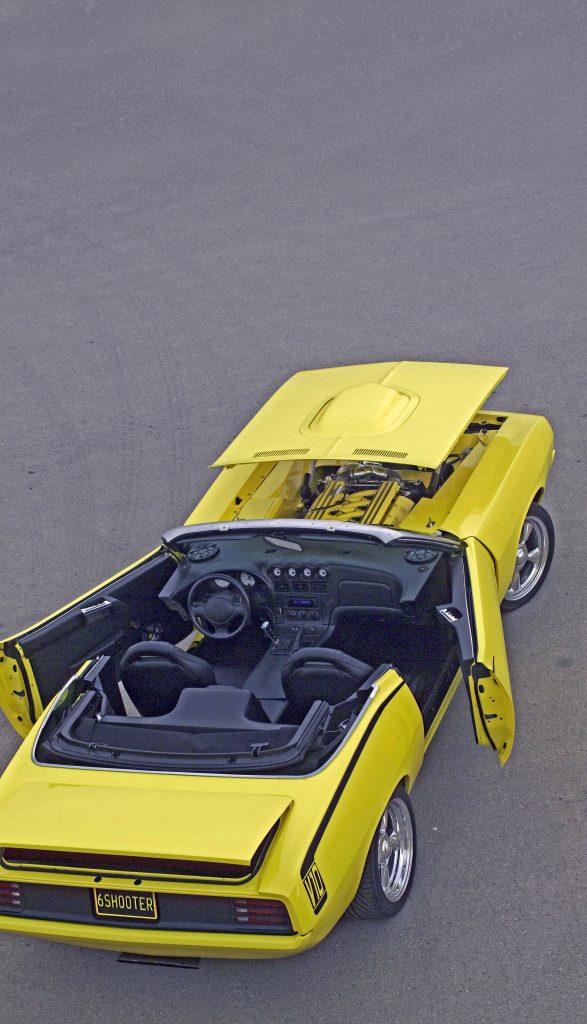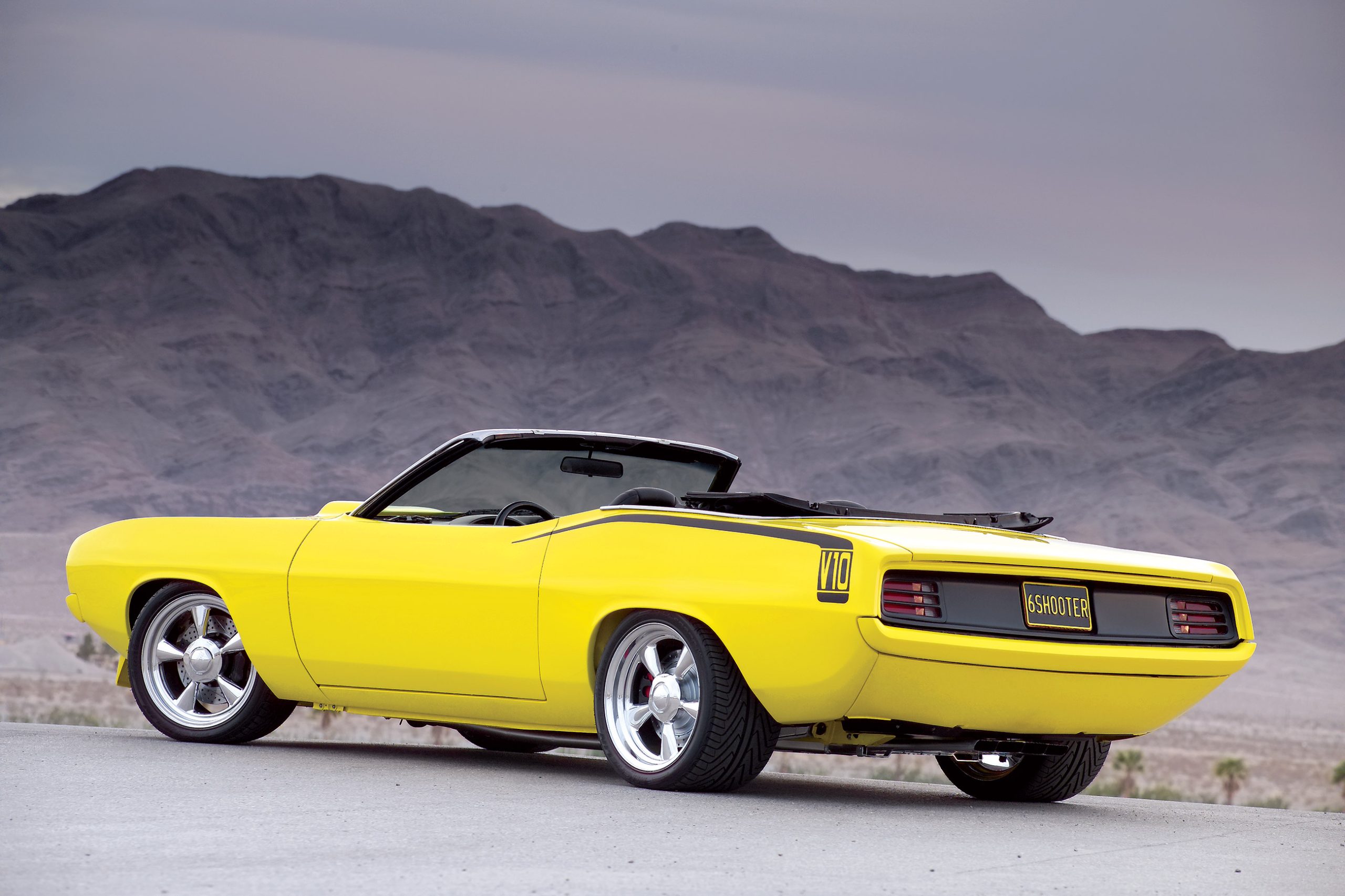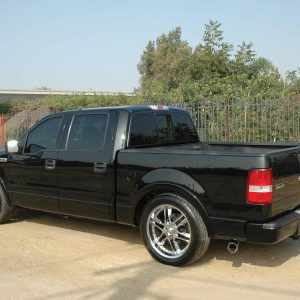


THE AUTO BUILDER
Featured

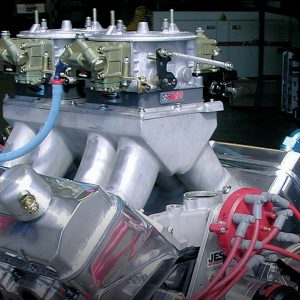
BUILDING A 1,000HP 565 DART BIG M/BIG CHIEF II

PRODUCT SPOTLIGHT: Hushmat® Silencer Megabond
- All Post
- 20 High Priority - SR Super Rod
- Builds
- 25 High Priority - FB Ford Builder
- Cars
- 30 High Priority - AR American Rodder
- 01 Post Status
- 35 High Priority - RD Rodders Digest
- 40 High Priority - OTR On the Road
- 45 High Priority - SRB Street Rod Builder
- 50 High Priority - TB Truck Builder
- 55 High Priority - BSCENE Buckaroo Scene
- 60 High Priority - FPB Family Power Boat
- Trucks
- Swaps
- Performance Boats
- _000 Home Sliders
- Builders
- 00 Sidebars
- Manufacturers
- 05 High Priority - HCI Hot Compact Imports
- 05 Publications
- 10 High Priority - CR Chevy Rumble
- Back
- Chassis
- Engine
- Fuel System
- Electrical
- Exhaust
- Transmission / Drivetrain
- Suspension
- Steering
- Brakes
- Wheels and Tires
- Interior
- Exterior
- Accessories
- Power Adders
- Back
- Chassis
- Engine
- Fuel System
- Electrical
- Exhaust
- Transmission / Drivetrain
- Suspension
- Steering
- Brakes
- Wheels and Tires
- Interior
- Exterior
- Accessories
- Power Adders
- Back
- Chassis
- Engine
- Electrical
- Exhaust
- Fuel System
- Transmission / Drivetrain
- Suspension
- Steering
- Brakes
- Wheels and Tires
- Interior
- Exterior
- Accessories
- Power Adders
- Back
- Chassis
- Engine
- Electrical
- Exhaust
- Fuel System
- Transmission / Drivetrain
- Suspension
- Steering
- Brakes
- Wheels and Tires
- Interior
- Exterior
- Accessories
- Power Adders
- Back
- Chassis
- Engine
- Fuel System
- Electrical
- Exhaust
- Transmission / Drivetrain
- Suspension
- Steering
- Brakes
- Wheels and Tires
- Interior
- Exterior
- Accessories
- Power Adders
- Back
- Chassis
- Engine
- Fuel System
- Electrical
- Exhaust
- Transmission / Drivetrain
- Suspension
- Steering
- Brakes
- Wheels and Tires
- Interior
- Exterior
- Accessories
- Power Adders
- Back
- Chassis
- Engine
- Fuel System
- Electrical
- Exhaust
- Transmission / Drivetrain
- Suspension
- Steering
- Brakes
- Wheels and Tires
- Interior
- Exterior
- Accessories
- Power Adders
- Back
- Engine
- Fuel System
- Electrical
- Outdrives
- Steering
- Interior
- Accessories
- Power Adders
- Exterior and Hull
- Back
- Chassis
- Engine
- Electrical
- Exhaust
- Fuel System
- Transmission / Drivetrain
- Suspension
- Steering
- Brakes
- Wheels and Tires
- Interior
- Exterior
- Accessories
- Power Adders
- Back
- Chevrolet
- Cadillac
- Pontiac
- AMC
- Buick
- Jeep
- Lincoln
- Ford
- Honda
- GMC
- BMW
- Mitsubishi
- Dodge
- Nissan
- Chrysler
- Subaru
- Toyota
- Plymouth
- Mercury
- Volvo
- Volkswagen
- Oldsmobile
- Acura
- Back
- 05 Pub HCI Hot Compact Imports
- 15 Pub 4x4 4x4 Builder
- 20 Pub SR Super Rod
- 25 Pub FB Ford Builder
- 30 Pub AR American Rodder
- 35 Pub RD Rodders Digest
- 40 Pub OTR On the Road
- 55 Pub BSCENE Buckaroo Scene
- 10 Pub CR Chevy Rumble
- 50 Pub TB Truck Builder
- 60 Pub FPB Family Power Boat
- 45 Pub SRB Street Rod Builder
- Back
- Chip Foose
- Ring Brothers
- Jack Fuller
- Bob Cullipher
- Jerry Nichols
- Bobby Alloway
- Jesse James
- Carl Casper
- J.F. Launier
- Steve Sellers
- Boyd Coddington
- Rad Rides by Troy
- Cal Auto Creations
- George Barris
- West Coast Customs
- Back
- Street Rods
- Hot Rods
- Late Model
- Drag Race
- Handling
- Compact Cars
- Chassis
- Engine
- Fuel System
- Electrical
- Exhaust
- Transmission / Drivetrain
- Suspension
- Steering
- Brakes
- Wheels and Tires
- Interior
- Exterior
- Accessories
- Power Adders
- Chassis
- Engine
- Fuel System
- Electrical
- Exhaust
- Transmission / Drivetrain
- Suspension
- Steering
- Brakes
- Wheels and Tires
- Interior
- Exterior
- Accessories
- Power Adders
- Chassis
- Engine
- Electrical
- Exhaust
- Fuel System
- Transmission / Drivetrain
- Suspension
- Steering
- Brakes
- Wheels and Tires
- Interior
- Exterior
- Accessories
- Power Adders
- Chassis
- Engine
- Electrical
- Exhaust
- Fuel System
- Transmission / Drivetrain
- Suspension
- Steering
- Brakes
- Wheels and Tires
- Interior
- Exterior
- Accessories
- Power Adders
- Chassis
- Engine
- Electrical
- Exhaust
- Fuel System
- Transmission / Drivetrain
- Suspension
- Steering
- Brakes
- Wheels and Tires
- Interior
- Exterior
- Accessories
- Power Adders
- Chassis
- Engine
- Fuel System
- Electrical
- Exhaust
- Transmission / Drivetrain
- Suspension
- Steering
- Brakes
- Wheels and Tires
- Interior
- Exterior
- Accessories
- Power Adders
- Back
- 05 Post Imported
- 20 Post Missing Images (All)
- 25 Post Missing Images (Partial)
- 15 Post In Progress
- 30 Post Internal Review
- 40 Post On Hold
- 50 Post Approved
- 10 Post Images Imported
- 17 Post Missing TXT Files
- 18 Post Missing PDF Files
- 27 Post Missing Content
- Back
- Chassis
- Engine Swaps
- Interior Swaps
- Driveline
- Back
- Street Trucks
- OffRoad Trucks
- Chassis
- Engine
- Fuel System
- Electrical
- Exhaust
- Transmission / Drivetrain
- Suspension
- Steering
- Brakes
- Wheels and Tires
- Interior
- Exterior
- Accessories
- Power Adders
- Chassis
- Engine
- Fuel System
- Electrical
- Exhaust
- Transmission / Drivetrain
- Suspension
- Steering
- Brakes
- Wheels and Tires
- Interior
- Exterior
- Accessories
- Power Adders
- Back
- 01 Sidebar Left
- 01 Sidebar Right
New-Age ‘Cuda
"Six-Shooter" – A ’70 Plymouth Barracuda Convertible Wrapped Around a ’98 Viper GTS
Author

Stephen K. Anderson
Photography: Scott Killeen
Upon approach, it stirs the heart much like the sight of an old friend, with the flowing contours that recall memories of great times and fast, simple cars—before we knew much about automotive computers, CDs or the true meaning of lateral acceleration and G-force. Like a favorite teddy bear from childhood, this welcomed image warms our hearts, yet beneath that familiar façade is a grizzly bear of sorts. One that will grab you by the throat, slam you against the seat back and rip heart-pounding sensations throughout your body. This is no ordinary ’70 Plymouth Barracuda—this is a rush!
This is, after all, but a shell of a ’70 Plymouth Barracuda convertible, all thoughtfully wrapped around a ’98 Dodge Viper GTS. The original underpinnings went the way of bias-ply tires and eight-track players, as a much-advanced suspension and a modern drivetrain took their place. An incarnation of today’s super rodding movement, this new-age ’Cuda is beyond anyone’s wildest dreams in the ’60s, and is equally as dreamlike today, save for those looking to relive the past here and now.
A Viper-Inspired Vision
Mike Staveski originally conceived the “Six Shooter” in May 2000, following the offer from a friend to drive his GTS Viper, which he couldn’t do—not for lack of desire, but because his 6-foot-8-inch frame would not fit in the coupe. It was then that he came up with this concept, based upon pure lust, and a love lost.
Forced to sell his Hemi ’Cuda years earlier, he had longed for a replacement, although until this new realization, he hadn’t yet found that desire. As it turned out, Staveski had lighted the fire beneath his most inspiring and challenging project to date. As the owner of Time Machines, Inc. in Hudson, Florida, Staveski and his crew had already proved their abilities, turning out several highly touted machines. Yet this project would test and confirm their true capability, building not one but several different examples of the car shown here.
Engineering the Beast
Being that the original ’Cuda was built around a unitized body design, several variations were considered, but in the end the best choice led to a combination of the existing structure, with a tubular chassis. Somewhat heavier than the original design, the benefits are an extremely stiff package that is designed to withstand the torsional loads created by the heavily modified, computer-controlled 488ci Viper V-10 engine. The new perimeter frame was notched into intersecting areas of the unibody and welded into place, allowing maximum space for the suspension and tire package. Once the frame and body were joined as one, the fully independent suspension components were fixed in place, including the rack-and-pinion steering and ACR Viper coilover shocks. Based on those used in racing Vipers, these shocks (available through the Mopar Performance catalog) are fully adjustable and incorporate external nitrogen canisters for the ultimate in suspension control.
Braking and Grip Technology
Additional capability comes through the addition of Baer’s Eradispeed vented and cross-drilled brake rotors (designed specifically for Vipers) that bear the load of highly detailed Viper calipers. To make the most of these pieces, the same Michelin Pilot Sport rubber used on ACR Vipers were fitted to this car, with 18×9.5-inch fronts and 18×12 rears on new Colorado Custom Leadville Ace rims that maximize the grip of the tarmac below.
Raw Power and Performance
With the chassis fully developed, it was time to fit the ACR Viper V-10 engine, some 7 inches back from the original engine position. For most, this would be more than enough excitement to raise the pulse, yet Staveski was looking for more, which came in the form of a Paxton Novi 2000 supercharger, a direct bolt-in package designed specifically for Vipers. Needless to say, this combination provided plenty of motivation for this conceptual ’Cuda, producing 650 hp and an equal amount of torque from just above idle to just below redline. Considering that even the mighty Hemi ’Cuda originally produced “just” 425 SAE horsepower across a narrower rpm range, this upgrade would certainly raise the bar on performance. In fact, when combined with the Viper’s six-speed T-56 manual transmission, it would thrust this car into an entirely different league.
Exterior Refinements
Once the underpinnings were finished, the focus turned to smoothing the exterior with a number of subtle yet effective changes. These included the removal of the door handles, although this involved more than the familiar electric solenoids. In this case, the doors were fitted with electric rams, as was the shaker hood and trunk, the top and even the windows. This allows totally remote operation through a simple remote-control unit to open and close them all.
Other changes can be seen in the custom front and rear valances and bumpers, which have been narrowed 1-1/2 inches in front and 3/4 inch at the rear. You’ll no doubt notice other changes, including the halogen headlights, all of which make for an improved version of one of the most beautiful muscle cars ever. Coated in a specially mixed yellow from PPG and accented with a modern V-10 side stripe reminiscent of the original design, the visual elements make a statement that’s impossible to ignore and easy to appreciate.
Interior Fusion
Impressive as the exterior may be, it’s equaled by the surprising adaptation of the Viper interior, including the race-inspired dashboard and center console with white-faced gauges and a bank of cool switches and controls. The deep-set Viper bucket seats feature the added detail of soft black Ultraleather with a glove-like feel that makes for a high degree of luxury, and new carpet does the same below. Additional accents come in the form of billet interior accessories that suit their surroundings well. And while you may think this would round out the special features of this ’Cuda, consider the state-of-the-art CD-based sound system that fills the interior with studio-quality music, even with the top down. Incorporating components from Sony, Polk Audio and Mono Line, it sets a standard that is in keeping with other details that are the rule rather than the exception on this car.
Building a Legacy
When you take into account all that has gone into this supreme machine, you also must credit the individuals who helped create it, including Phil Somers, Willie Hartshorn, John O’Mara, Woody Woodham, Michael Dear, James McLeod and Ray Staveski. And then, of course, there’s Mike Staveski, the leader of these capable craftsmen.
While a grizzly bear provided a metaphor to describe this amazing animal, we also need to look to the most deadly snakes in the world to describe this thundering amalgamation of past and present. The Viper is unquestionably one of the most feared vehicles on the market and on the racetrack today, and when concealed in one of the more favored muscle cars of all time, an entirely new hybrid is realized, one that will stir the desires of super rodders everywhere.
Limited Production Potential
Fortunately, for those of you who would like to fall in line, this car is far more than a single representation of a tremendous concept. This car will serve as the prototype for a limited-production run of similar vehicles. As you read this, a select number of ’Cudas and one Challenger are in the early stages of planning, while another is taking shape as you read this, based upon the individual specifications of its owner. For those of you interested in the opportunity of owning such a car, that rare opportunity is still within reach, although not for long. Since being honored as the “Best Mopar” at the recent SEMA show in Las Vegas, Time Machines, Inc. has been deluged with phone calls and e-mails inquiring about the availability of similar creations, so be forewarned.
For those who have always appreciated the sleek lines of these cars, but have longed for the performance levels we’ve come to expect today, this is an opportunity to own and enjoy both, and in one creation that delivers a particular image. Call it a muscle car, call it whatever—you would be correct on all counts, as this “time machine” melds both worlds, past and present, and shoots for the future.
Where is “Six-Shooter” these Days?
The iconic “Six Shooter” Viper-powered 1970 Plymouth Barracuda crossed the auction block at Mecum Houston 2025 on Saturday, May 17, but did not immediately sell, with the listing now marked as “The Bid Goes On.” The listing is now marked as “The Bid Goes On,” keeping the door open for potential buyers to claim this one-of-a-kind fusion of vintage Mopar style and modern Viper performance.
MUSCULAR MOPAR
While the accompanying feature on this ’Cuda certainly brings out its highlights, you really need to check out this buildup to understand how two of the most favored Mopars came together in one amazing creation. Needless to say, it wasn’t easy, with major changes in the dimensions of the drivetrain, the blending of the original unibody and the subframe, and the replacement of the outdated suspension with more independent suspension, and yet Time Machines Inc. pulled it off. Look closely and you’ll appreciate all the unique approaches and clever craftsmanship that are key to the creation of this car, and several others that build on the legend of the ’Cuda.






